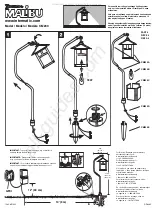
4
Chapter 3: General Information
What Is the TASER Bolt 2 Energy Weapon?
The TASER Bolt 2 is a self-defense energy weapon manufactured by Axon Enterprise, Inc. TASER-brand
energy weapons are designed to use propelled wires or direct contact to conduct energy to affect the
sensory and/or motor functions of the nervous system.
The Bolt 2 energy weapon uses a replaceable cartridge containing compressed nitrogen to deploy two
small probes that are attached to the Bolt cartridge by insulated conductive wires with a maximum
length of 15 feet (4.6 m). The Bolt 2 energy weapon transmits electrical pulses along the wires and
into the body, which if used successfully will affect the sensory and motor functions of the peripheral
nervous system to immobilize the body.
The Bolt 2 energy weapon has an estimated useful life of two years.
Neuro Muscular Incapacitation (NMI)
TASER technology is designed to use electrical pulses similar to those in your body’s nervous system
to cause stimulation that affects the sensory and motor nerves. Neuro Muscular Incapacitation
(NMI) occurs when an energy weapon is able to cause involuntary stimulation of both the sensory
nerves and the motor nerves to render an attacker temporarily unable to control movement.
It is not dependent on pain and can be effective on subjects with a high level of pain tolerance.
Previous generations of stun guns could primarily affect the sensory nerves only, resulting in pain
compliance. An attacker with a very high tolerance to pain (e.g., a drug abuser, person in serious
psychological distress, or a trained, focused fighter) may not be affected by the pain or might be able
to fight through the pain of a traditional stun gun.
An energy weapon may cause NMI if probes are within sufficient proximity to complete a circuit, the
probes have a sufficient spread, and an adequate circuit is completed and maintained.
Basic Bolt 2 Electrical Theory
Electricity must be able to flow between the probes or the electrodes to deliver an electrical charge
and will generally follow the path of least resistance.
The greater the spread between the probes on the target, generally the greater the NMI effectiveness.
Electricity will generally not pass to others in contact with the subject unless contact is made directly
between or on the probes or the wires are touched.
Exposure to water will not increase the power to the subject (the electrical charge is fixed inside the








































